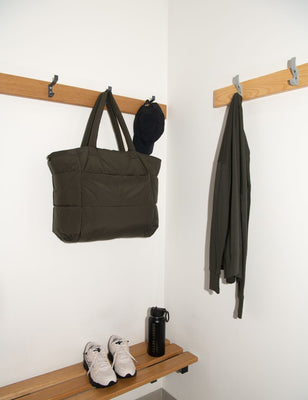
Words by Ben Lombard Physiotherapy
With the current situation as it stands, most of us have been forced into isolation and a temporary Work From Home (WFH) protocol has been enacted. We’ve been sent away from the office, into our homes and it has only been a week... and already I’m getting complaints from clients of aches and pains!
So if we are now confined to our homes, you best make sure you set yourself up properly if you want to avoid triggering old injuries or creating new ones. Many people will be tempted to hunch over their laptops, slouch in the beds or work from their sofas, which may be comfortable short-term, but problematic in the long-term. If you are going to be in one place for so long, you may as well make it comfortable..
7 EASY TIPS for making your workspace more comfortable:
1. Sit properly
Most of us are guilty of this. The side slumping, the slouching...
- Get a proper chair. Invest in your body and it will pay off!
- Sit in the back of your chair, with your feet flat on the floor.
- Get the height of your chair right so that your knees are at 90 degrees. If the chair is too high or low, this may encourage you to sit with your legs crossed and/or your back slumped
2. Try using a Lumbar Support
Some of us are lucky enough to have lumbar supports built into the chair. If not, they are very affordable online and are totally worth it.
The Lumbar support reduces the amount of lumbar flexion (rounding your lower back), which in turn reduces the amount of thoracic flexion (rounding of the upper back and neck).
3. Elevate your screen to eye height
Avoid rounding your shoulders and neck too much by keeping your screen at eye level. Even the smallest changes in the angles of your head can have a big influence on the muscles in your neck and back.
If you are using a laptop, there are nifty little laptop stands which are totally worth investing in!

4. Avoid repetitive rotation
If you have multiple screens try and stack them on top of each other, or move them both more centrally. If you have more than two screens, make sure you arrange the screens in order of frequent use.
5. Get up and move around
Seems obvious, but just standing up and walking a few yards will help move some fresh blood around and engage some muscles otherwise not being used.
When we are sat down, we have bent knees, closed hips, disengaged core and glutes, plus a rounding of the back.. Sounds pretty miserable! So charge your phone at the opposite side of the room, or have regular tea and water breaks. A mid-afternoon dance around the ‘home office’ is also strongly advised.
6. Try some easy desk stretches and exercises
Keep it simple! Here are some great desk stretch ideas:
- Gently rotate your shoulders in circles
- Reach up over your head and lean side to side
- Gently stretch your neck from side to side (think ear to shoulder)
- Reach behind your chair to stretch your chest
- Ask for a sit/stand desk
It is not actually the sitting specifically that causes the pain, as people with standing desks will also complain of pain. Instead, it is the static posture of doing just one or the other. Our bodies are designed to be flexible, strong and agile. So it’s no wonder that after sitting down for 8+ hours per day, our body begins to winge and moan.

Conclusion
So there you have it - 7 tips that you can immediately add into your workspace to rapidly change your working posture and decrease any associated aches and pains.
If you would like more specific advice, book in a session and we can go from there. I am currently offering video physiotherapy consultations as well as a video service designed to help with home-office optimisation - both with injury prevention exercises! Thank me later.






























































